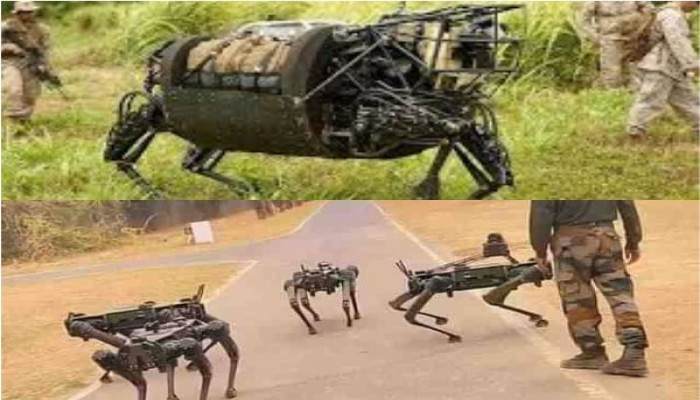Indian Army deploys 100 robotic mules to enhance surveillance and logistics along LoC
- In Reports
- 07:23 PM, Aug 14, 2025
- Myind Staff
The Indian Army’s recent deployment of the Multi Utility Legged Equipment (MULE), also known as robotic mules or robotic dogs, marked a major technological step in improving security and operational efficiency along the Line of Control in Jammu and Kashmir.
These unmanned ground vehicles were inducted in large numbers, reportedly 100 units, across the Line of Control, including the strategic Sunderbani sector. They were designed to assist soldiers in difficult terrains, improving logistics, surveillance, and reconnaissance capabilities while reducing the physical strain on personnel in extreme environmental conditions.
The MULE robots were quadrupedal machines built to carry loads of up to 15 kilograms and could transport supplies such as food, ammunition, and water. They could navigate difficult landscapes, climb steep hills, cross rivers, tackle stairs, and move through narrow pathways, tasks that were challenging even for soldiers or pack animals. They were equipped with advanced sensors, including infrared and optical cameras, allowing them to function both during the day and at night to strengthen border surveillance.
Their operational temperature range was notable as they could work in conditions from minus 40 degrees Celsius to plus 55 degrees Celsius, ensuring year-round use in different weather conditions. Army officials said that the MULE’s modular design allowed it to be adapted for various roles such as perimeter security, explosives detection, and intelligence gathering. The robots could also work in swarms to cover wider areas and share data in real time, improving situational awareness without putting soldiers at risk.
The security environment at the Line of Control had grown more complex, and the Army had been incorporating advanced technologies to improve defensive and offensive readiness. The deployment of these robotic mules followed successful trials during operations such as Operation Sindoor and also extended to humanitarian work like earthquake relief in Myanmar under Operation Brahma, where robotic dogs entered collapsed buildings for reconnaissance and search and rescue.
At the Line of Control in Rajouri district, these machines formed part of a multi-layered counter-infiltration strategy that included smart fencing, UAV surveillance, radars, and all-terrain military vehicles like the Mahindra Armado. The presence of the MULE robots reduced the logistical burden in dangerous zones, increased rapid response capabilities, and decreased dependence on animals used in mountainous areas. It reflected the Army’s aim to replace about 50 to 60 per cent of animal transport with robotic systems by 2030 to modernise border management in a sustainable way.
Beyond their combat role, these robotic mules had also shown their usefulness in disaster relief and humanitarian operations. The Army’s use of these robots in earthquake-affected areas demonstrated how military technology could be adapted for civil purposes, highlighting the dual-use nature of such innovations. This adaptability signalled a new stage where military technology could be used alongside humanitarian efforts, showing the Army’s ability to extend its capabilities beyond conflict into disaster response.







Comments